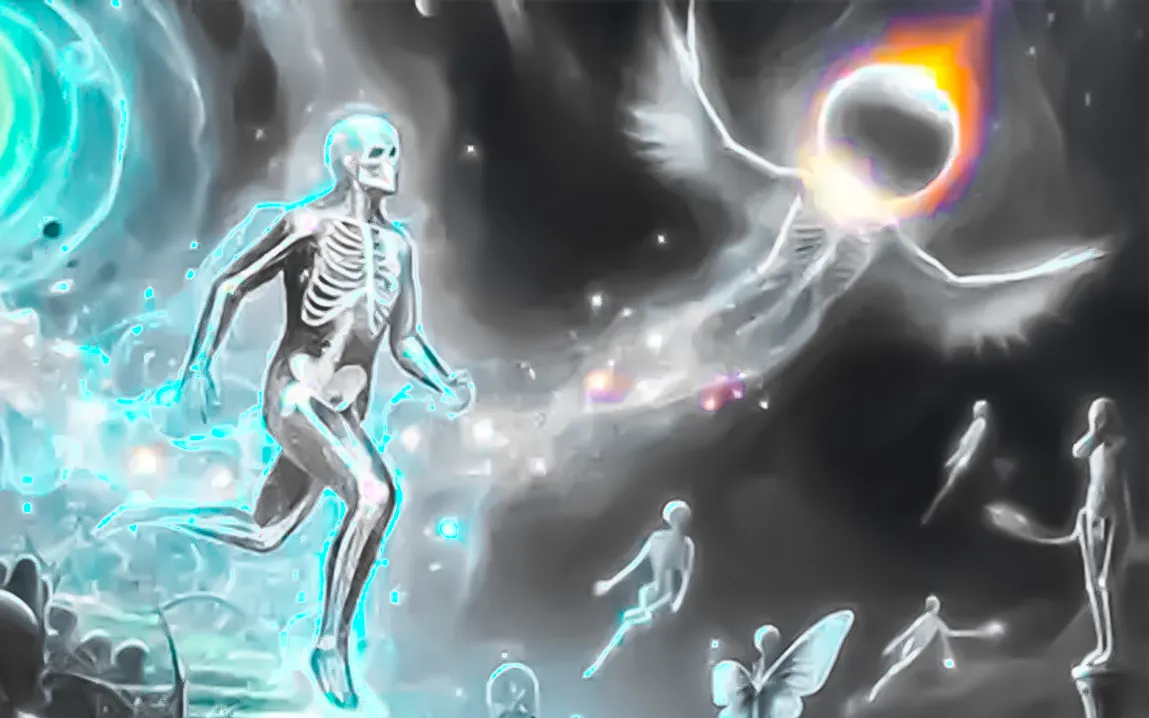A revolutionary theory is challenging us to reconsider death and consciousness, as it is proposed that a psychedelic molecule in the brain could hold the key to the elusive reports of near-death experiences. Drawing on neuroscience, psychology, and biochemistry, this theory formulates an intriguing idea of how the mind can shift from life to death.
The Psychedelic Function in the Brain
Psychedelic drugs like DMT (dimethyltryptamine) have long intrigued scientists as they can induce alterations in the state of consciousness. DMT, also known as the “spirit molecule,” naturally occurs in minute traces in the human brain and may also be found in certain plants. Some researchers now believe that this molecule may be crucial during our dying moments, inducing near-death experiences (NDEs) and determining how we experience the moment of death.
What Happens at the Moment of Death?
People who have come close to death report vivid experiences—floating out of their bodies, greeting dead friends and relatives, feeling intense peace, or moving toward a light. These descriptions are remarkably consistent across cultures, leading some scientists to investigate the possibility of a biological explanation.
The new theory suggests that during periods of extreme stress, such as a near-death experience, the brain overloads with DMT. This sudden release would create the sensations of NDEs, making death not so frightening but mystical.
Scientific Clues: The DMT-Death Connection
There has been some research to suggest the possibility of DMT being a part of death consciousness. In 2019, researchers discovered the brains of rats release a lot of DMT when they suffer cardiac arrest. The discovery sparked people’s imaginations with the idea that it might happen in humans, causing the overwhelming and often spiritual responses that individuals experience when they are dying.
In addition, a 2022 study found that when subjects were administered DMT, their brain wave patterns were similar to those in extremely conscious states instead of unconsciousness. This leads us to believe that if the brain secretes DMT during death, it may induce a state of increased awareness instead of just being turned off.
How This Theory Changes Our View of Death
If DMT really reigns in our final conscious moments, it could redefine death itself. Instead of a terrifying, sudden event, death could be a more expansive, even peaceful one. This would accord with the many NDE accounts of people describing an overpowering sense of love and connection, as though they are part of something greater than themselves.
While traditional science has long attributed such experiences as simple hallucinations from oxygen depletion or brain failure, this novel theory suggests that they might be biologically programmed and significant.
Challenges and Skepticism
Although there is a great deal of excitement regarding this theory, not everyone is buying it. Some scientists think that although DMT might be present in near-death experiences, it is not the direct cause. They point out that other neurochemicals, including endorphins and serotonin, also peak at death and could be causing similar sensations.
Also, it is extremely difficult to quantify the levels of DMT in the terminal human brain, and hence, it is difficult to test this hypothesis with direct evidence. To date, most of the evidence is based on animal studies and indirect comparisons with psychedelic-induced experience.
Implications for Consciousness and the Afterlife
The idea that a psychedelic substance could have control over our last moments alive raises serious spiritual and philosophical issues. If consciousness continues in some form following biologic death, could DMT be the gateway to a realm of existence? Some theories suggest that DMT experiences are similar to religious descriptions of the afterlife, leading one to wonder if the molecule provides information about something greater than our reality.
Practically, understanding how DMT impacts consciousness could also have clinical implications. Psychedelic research already has promising outcomes for the therapy of depression, anxiety, and PTSD, and if scientists learn more about DMT’s role in death, that could give rise to novel ways of reducing dying patients’ suffering.
What’s Next
Since the study of psychedelics increases, future research may include a direct measurement of DMT levels in the human brain during the time of near-death experiences. Researchers may further explore how the other neurotransmitters interact with DMT during near-death experiences.
For the present, this theory offers a compelling potentiality: that our minds may be hard-wired to facilitate the passage out of life as intense as the one lived. Whether death is merely an organic process or a transcendence thereof is not certain, yet one thing is beyond dispute—science is just starting to unravel the secrets of the mind at the precipice of existence.



